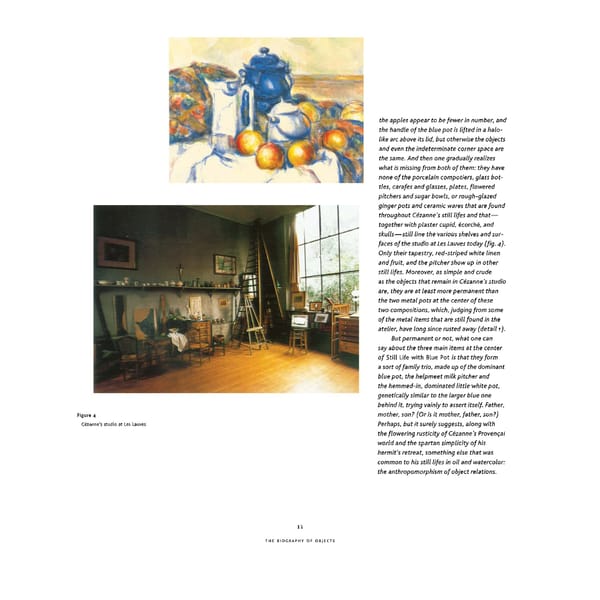the apples appear to be fewer in number, and the handle of the blue pot is lifted in a halo- like arc above its lid, but otherwise the objects and even the indeterminate corner space are the same. And then one gradually realizes what is missing from both of them: they have none of the porcelain compotiers, glass bot- tles, carafes and glasses, plates, flowered Detail i pitchers and sugar bowls, or rough-glazed ginger pots and ceramic wares that are found throughout Cezanne's still lifes and that— together with plaster cupid, ecorche, and skulls—still line the various shelves and sur- faces of the studio at Les Lauves today (fig. 4). Only their tapestry, red-striped white linen and fruit, and the pitcher show up in other still lifes. Moreover, as simple and crude as the objects that remain in Cezanne's studio are, they are at least more permanent than the two metal pots at the center of these two compositions, which, judging from some of the metal items that are still found in the atelier, have long since rusted away (detail i). But permanent or not, what one can say about the three main items at the center of Still Life with Blue Pot is that they form a sort of family trio, made up of the dominant blue pot, the helpmeet milk pitcher and the hemmed-in, dominated little white pot, genetically similar to the larger blue one behind it, trying vainly to assert itself. Father, Figure 4 mother, son? (Or is it mother, father, son?) Cezanne's studio at Les Lauves Perhaps, but it surely suggests, along with the flowering rusticity of Cezanne's Provencal world and the spartan simplicity of his hermit's retreat, something else that was common to his still lifes in oil and watercolor: the anthropomorphism of object relations. 11 THE BIOGRAPHY OF OBJECTS
 Cézanne in the Studio: Still Life in Watercolors Page 25 Page 27
Cézanne in the Studio: Still Life in Watercolors Page 25 Page 27